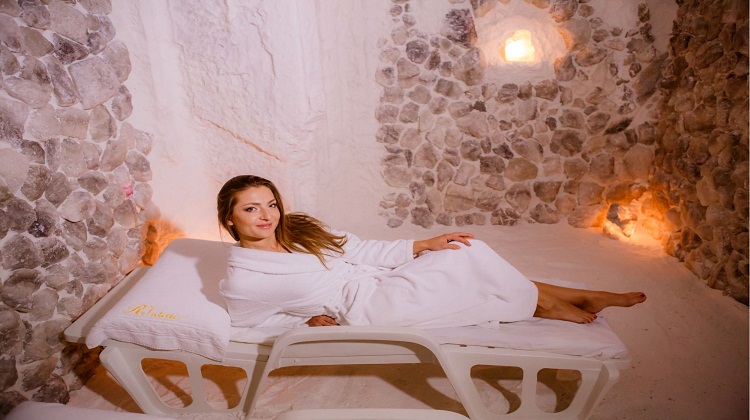Among alternative therapies, salt therapy is one of the most popular. This is likely because it’s easy to use and doesn’t require a prescription. Salt therapy can be used for a variety of purposes, such as reducing stress, improving sleep, and treating various health conditions.
If you’re considering salt therapy as an option for your health, here are five things to keep in mind.
The Different Types of Salt Therapy
Salt therapy is a type of alternative medicine that uses salt to treat conditions such as anxiety, depression, and pain. There are several different types of salt therapy, each with its own benefits and drawbacks.
One type of salt therapy is hyperventilation therapy. In this method, patients breathe in lots of air and then breathe in salt pills or capsules. This causes the body to release serotonin, which is a neurotransmitter that can help relieve symptoms like anxiety and depression. Hyperventilation therapy is not recommended for people with heart problems or who are pregnant.
Another type of salt therapy is hydrotherapy. In this method, patients soak in a tub full of water containing salts. This exposure to salty water can help relieve pain and tension headaches, among other conditions. Hydrotherapy is not recommended for people who have heart problems or who are pregnant.
A third type of salt therapy is autogenic training (AT). In this method, patients sit in a comfortable position and focus on deep breathing exercises for about 20 minutes per day. This exercise can help improve moods and reduce stress levels. AT is not recommended for people who have high blood pressure or an underlying medical condition that could be exacerbated by stress or movement restrictions.
How to Choose the Right Salt Therapy for You
Are you looking to try salt therapy? If so, there are a few things to consider before selecting the right salt therapy for you. Here are some tips:
-Salt therapy is not just for people with dry skin. People of all skin types can benefit from salt therapy, as long as their skin is in good condition.
-Salt therapy can be used on entire bodies or just specific areas. It’s up to you which areas you choose to treat.
-Not all salts are created equal when it comes to effectiveness. Make sure to find a salt that is specifically designed for skin care. Some popular salts include Himalayan pink salt, Celtic seaweed salt, and chamomile salt.
– Salt should be applied liberally and thoroughly coated onto the skin. Don’t be afraid to use a lot of salt! Storage containers should have a lid that seals tightly so that the salt doesn’t evaporate while it’s being stored.
The Benefits of Salt Therapy
Halotherapy salt therapy is a natural treatment that has been used for centuries to help with a variety of health concerns. It works by soothing the body, reducing inflammation and aiding in the healing process. There are many benefits to salt therapy, including:
-Salt therapy can help reduce inflammation and alleviate pain.
-Salt therapy can help improve overall health by helping to restore balance in the body.
-Salt therapy can help improve skin quality and reduce the appearance of blemishes.
-Salt therapy can help speed up the healing process and reduce the amount of time it takes for injuries to heal.
How Salt Therapy Works
Salt therapy works by reducing inflammation and pain in the body. It does this by drawing out toxins and other impurities from the body through the lymphatic system. This makes salt therapy a powerful detoxifier and natural healer.
How to Use Salt Therapy
To use salt therapy, you will need some sea salt or Himalayan salt. You can also use Epsom salts or baking soda if you do not have sea or Himalayan salt available. You will also need a basin or container to put the salt in and comfortable clothes to get wet in (such as a bathing suit).
To begin using salt therapy, mix two tablespoons of sea or Himalayan salts with enough water to make a slushy consistency. If you are using Epsom salts or baking soda, add them directly to the basin of water. Stir until all the powder is dissolved before beginning treatment.
Wet your hair and face first before applying the mixture to your skin. Apply it liberally to your forehead, temples, cheeks, neck, and chest. Leave the salt on for a minimum of 20 minutes, and up to an hour if you have pain or headaches that require long treatment.
Rinse off the salt mixture with cool water and pat yourself dry. You can also apply a cool, wet cloth to your skin to further cool and soothe the area.
Conclusion
If you are considering salt therapy, there are five important things to keep in mind. First and foremost, it is important to consult with a qualified health professional before beginning any type of treatment. Second, always use caution when using salt therapy on your skin as too much can lead to burns or other skin injuries. Third, be sure to drink plenty of fluids while using salt therapy in order to avoid dehydration. Fourth, make sure that you are taking the correct dosage of salt and that it is applied correctly – over-use of salt may result in adverse effects. Finally, be patient as Salt Therapy can take time to have an impact on your health. Thanks for reading!


